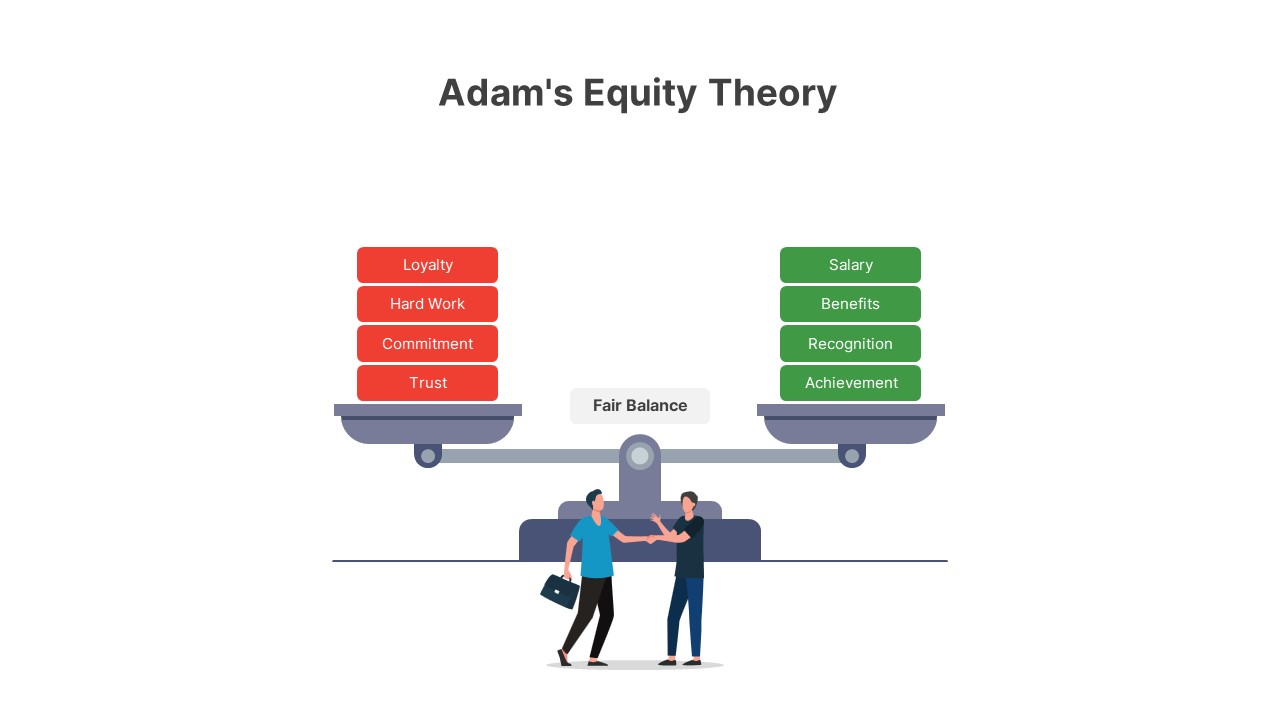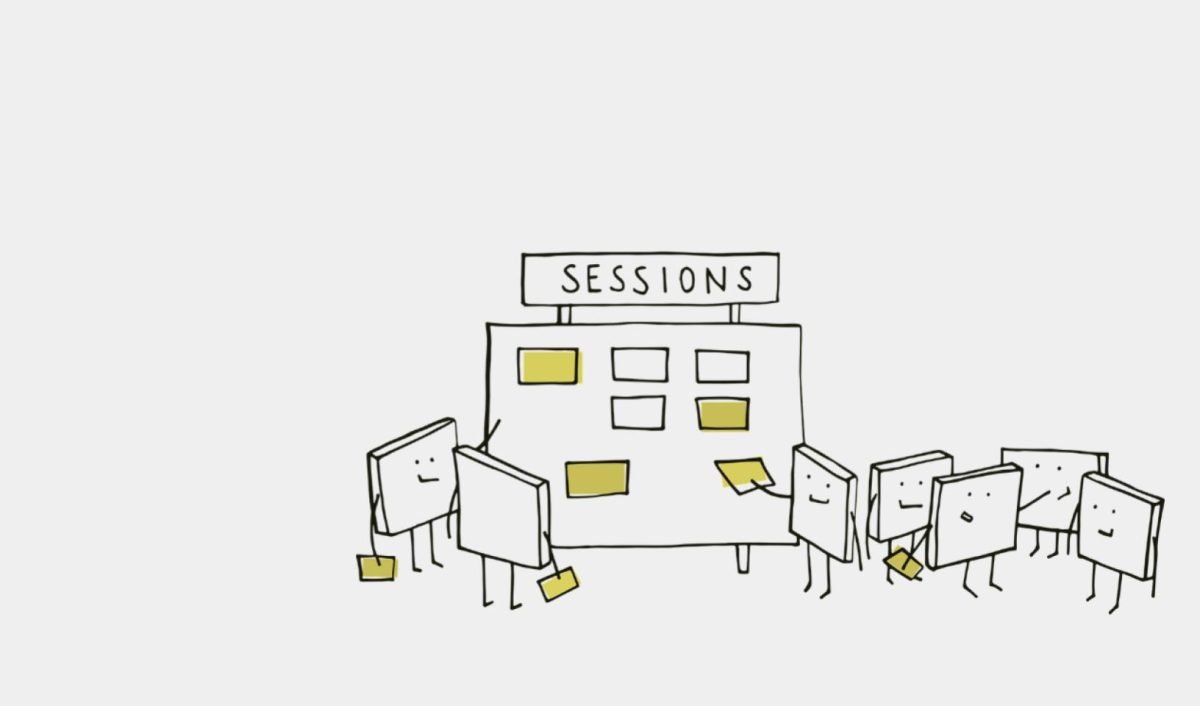Have you ever felt underappreciated or underpaid for your work? We've all likely experienced moments when something didn't seem "fair" in our jobs or relationships.
This sense of unfairness or inequity is at the core of what psychologists call the equity theory of motivation.
In this post, we'll explore the basics of equity theory and how you can harness its potential to foster a fair workplace.
Table of Contents
- What is the Equity Theory of Motivation?
- Pros and Cons of Equity Theory of Motivation
- Factors that Affect Equity Theory of Motivation
- How to Apply the Equity Theory of Motivation in the Workplace
- Takeaway
- Frequently Asked Questions
Tips for Better Engagement

Get your Employees Engaged
Start meaningful discussion, get useful feedback and appreciate your employees. Sign up to take free AhaSlides template
🚀 Grab Free Quiz☁️
What is the Equity Theory of Motivation?
The equity theory of motivation focuses on exploring one's sense of fairness at work which has a direct effect on their motivation.
It was proposed by John Stacey Adams in the 1960s, hence the other name, "Adams' Equity Theory".
According to this idea, we're all constantly keeping score ~ tallying up our own inputs (like effort, skills, experience) against the output/outcome (like pay, benefits, recognition) we get in return. We can't help but compare our input-output ratio to those around us.
If we start to feel like our score doesn't measure up to other people's - if our ratio of effort in versus rewards out seems unjust - it creates a sense of imbalance. And that imbalance, according to the equity theory, is a real motivation killer.

Pros and Cons of Equity Theory of Motivation
To understand Adam's equity theory better, one should look at both the merits and demerits.
Pros:
- It recognises the importance of fairness and justice in motivating behaviour. People want to feel they are being treated equally.
- Explains phenomena like inequity aversion and restoring balance through action or perception changes.
- Provides insights for organisations on how to distribute rewards and recognition in an equitable way to boost satisfaction and performance.
- Applicable in a variety of relationship contexts like work, marriage, friendships, and more where perceptions of equity arise.

Cons:
- People may have different personal definitions of what's considered a fair input-output ratio, making it hard to achieve perfect equity.
- Focuses only on equity and not other important factors like trust in management or quality of work itself.
- Can promote comparison with others instead of self-improvement and lead to feelings of entitlement over fairness.
- Difficult to definitively measure and quantify all inputs and outputs to compare ratios objectively.
- Doesn't consider other motivators like achievement, growth or belonging that also affect motivation.
- May cause conflict if addressing perceived inequities disrupts actual equity or existing internal systems/policies.
While equity theory provides useful insights, it has limitations as not all factors influencing motivation are about comparison or fairness. The application requires consideration of multiple factors and individual differences.
Factors that Affect Equity Theory of Motivation

According to equity theory, we don't just compare our own input-outcome ratios internally. There are four referent groups we look up to:
- Self-inside: The individual’s experience and treatment within their current organisation over time. They may reflect their current inputs/outputs with their past situation.
- Self-outside: The individual’s own experience with different organisations in the past. They may mentally compare their current job to a previous one.
- Others-inside: Others within the individual’s current company. Employees commonly compare themselves to their coworkers doing similar jobs.
- Others-outside: Others external to the individual's organisation, such as friends in similar roles at other companies.
People are naturally inclined to size themselves up against others to assess social and self-standing. Proper comparison groups accounting for differences are important to equity theory and maintaining healthy self-perceptions.
How to Apply the Equity Theory of Motivation in the Workplace
The equity theory of motivation can be used to foster an environment where employees feel their contributions are valued through fair and consistent treatment, thus boosting their intrinsic motivation. Let's see some ways companies can work on it:
#1. Track inputs and outputs

Formally monitor employees' inputs and outputs they receive over time.
Common inputs include hours worked, commitment, experience, skills, responsibilities, flexibility, sacrifices made and such. Basically any efforts or attributes the employee puts in.
Outputs can be tangible, like salary, benefits, stock options or intangible, like recognition, promotion opportunities, flexibility, and sense of achievement.
This provides data on perceptions of fairness.
#2. Establish clear, consistent policies
Reward and recognition systems should be based on objective performance metrics rather than favouritism.
Clearly communicate roles, expectations and compensation structures to the staff to dispel any dissatisfaction raised from not knowing the company's policy well.
#3. Conduct regular feedback sessions
Use one-on-ones, surveys and exit interviews to identify early signs of inequity.
Feedback should be frequent, at least quarterly, to catch small issues before they escalate. Regular check-ins show employees their views are being considered.
Follow up on issues to close the feedback loop and show employee perspectives were truly heard and considered in an ongoing spirit of equity.
💡 AhaSlides provides free survey templates for organisations to gauge employees' opinions quickly.
#4. Balance tangible and intangible rewards
While pay is important, non-financial benefits can also significantly affect employee perceptions of equity and fairness.
Perks like flexible scheduling, additional time off, health/wellness benefits, or student loan assistance may counterbalance pay differences for some workers.
Effectively communicating the value of intangibles helps employees consider total compensation, not just base pay in isolation.
#5. Consult employees on changes

When making organisational changes, keeping employees in the loop will let them understand their views matter and gain buy-in.
Solicit anonymous feedback to understand their concerns without fear of negative consequences.
Discuss the pros/cons of alternatives with them to find mutually agreeable solutions balancing multiple priorities.
#6. Train managers
Supervisors need training to evaluate roles and employees objectively, free from bias, and to distribute work and rewards in a demonstrably equitable manner.
They will be expected to explain legal responsibilities to avoid discrimination and ensure equitable treatment in areas like pay, promotion decisions, discipline, performance reviews and such.
#7. Create understanding
Set up networking events, mentoring programs and development projects that give employees insight into others' full contributions and challenges in maintaining fair treatment.
Networking events allow informal interactions that reveal commonalities between roles more comparable than assumed.
During projects, you can set up teammates from different roles for a brainstorming session together to recognise the skills/knowledge each contributes.
Collaboration Elevated, Skills Celebrated
AhaSlides' team brainstorming feature unlocks the power of every teammate🎉

Takeaway
In essence, the equity theory of motivation is all about keeping tabs on whether we're getting a raw deal compared to those around us.
And if the scale starts to tip in the wrong direction, look out - because according to this idea, the motivation is about to get dumped right off a cliff!
Making small adjustments by following our tips will help you balance the scale and keep everyone engaged for the time to come.
Frequently Asked Questions
What is equity theory and example?
Equity theory is a motivation theory that suggests employees seek to maintain fairness, or equity, between what they contribute to their work (inputs) and what they receive from their work (outcomes) in comparison to others. For example, if Bob feels he works harder than his co-worker Mike but Mike gets better pay, equity is not perceived. Bob may then reduce his effort, ask for a raise, or find a new job to eliminate this inequity.
What are the three key aspects of equity theory?
The three main aspects of equity theory are input, outcome and comparison level.
Who defined equity theory?
The equity theory was introduced by John Stacey Adam in 1963.











